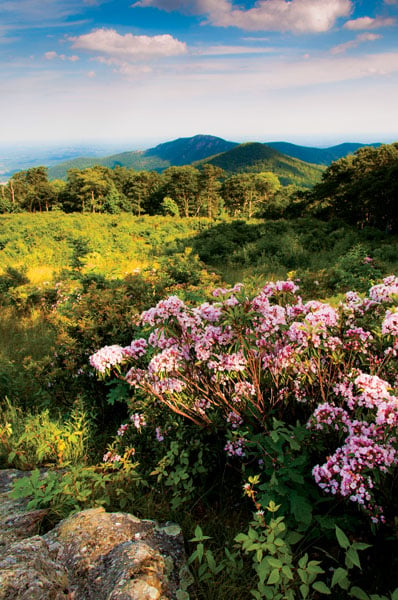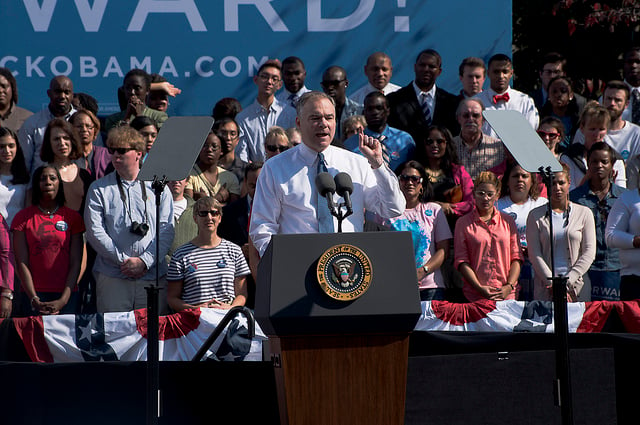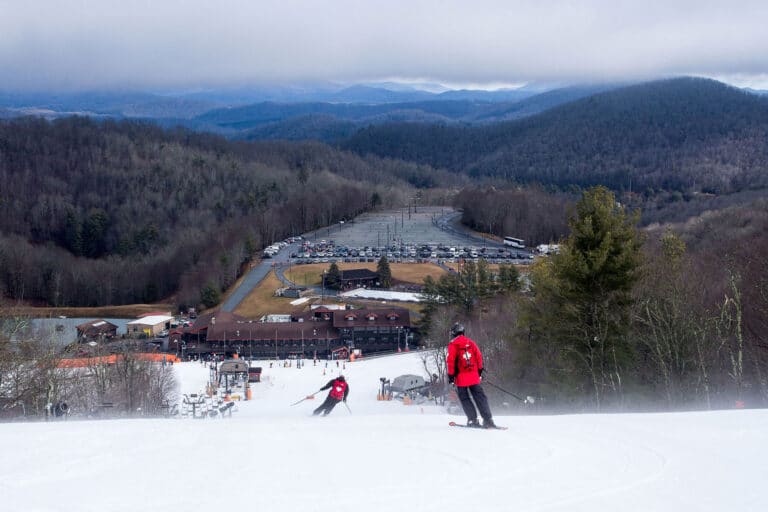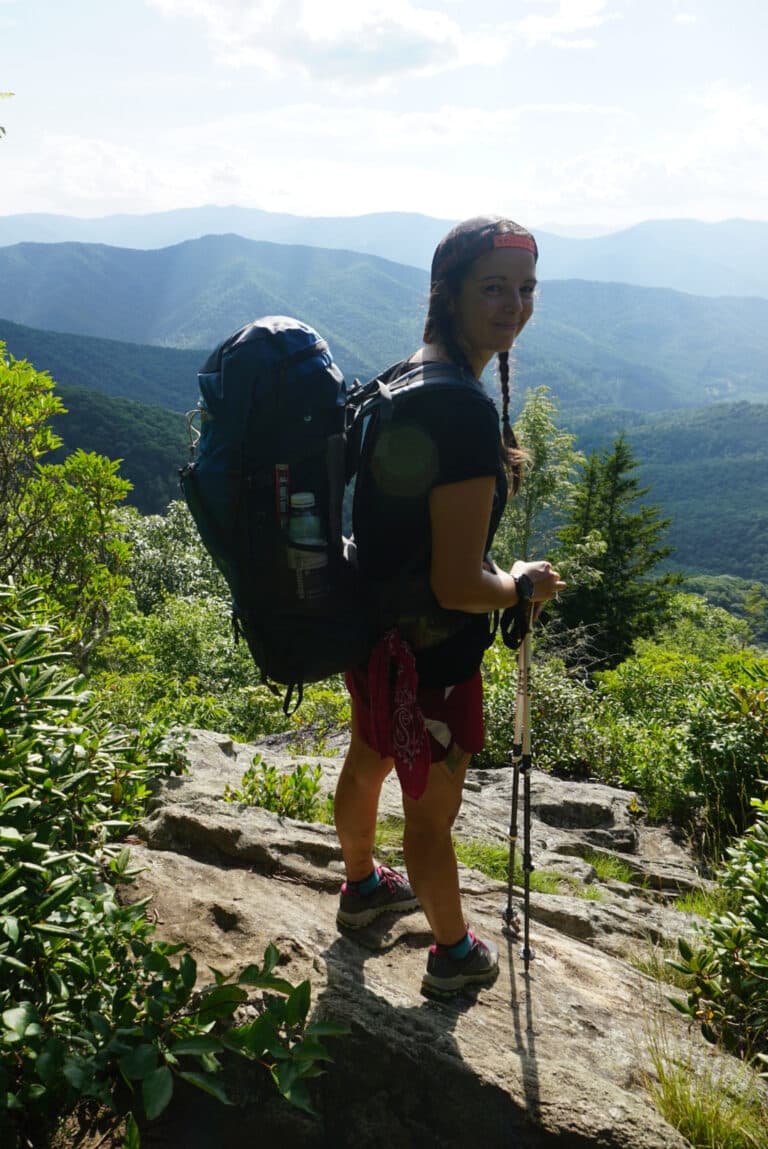When I need to unplug from the noise of politics, I ditch the suit and tie for a few hours, lace up my hiking boots, and hit Virginia’s great outdoors.
From the Eastern Shore to the Cumberland Gap, Virginia is blessed with some of the finest natural resources of any state in America. There’s no better time to get out and enjoy those resources than 2016—the 100th anniversary of America’s national parks. To commemorate this anniversary, my staff and I will visit every one of Virginia’s national parks this year. I kicked off this effort on April 11th when I joined National Park Service (NPS) employees, local officials, park advocates, and a few sure-footed reporters on the Stony Man Trail in Shenandoah National Park.
I’m embarking on this effort for several reasons. First, I want to draw attention to Virginia’s national parks, which are terrific assets, both for recreation and Virginia’s economy. People come from all over the country and world to hike the Appalachian Trail, to drive the Blue Ridge Parkway, to watch the ponies run at Assateague Island, to celebrate America’s founding at Jamestown and Yorktown, and to reflect on the sacrifices made on the hallowed battlefields of the Civil War. Aside from their immeasurable intrinsic value, these places are also an economic boon for surrounding communities, particularly in rural areas.

Second, I wanted to thank the hard-working men and women of the National Park Service. You’ve probably heard that 1 in 9 Virginians is a veteran, but the Commonwealth is also home to tens of thousands of non-military federal workers. It’s easy to score points by blasting government bureaucrats, but let’s not forget the overwhelming majority of federal employees who work every day to make the federal government more efficient and more accountable. These park rangers put the “service” in National Park Service, and their work benefits all of us.
Third, I’d like to use this occasion of the NPS Centennial to trumpet publicly that we need to be doing a better job managing these assets. Across the country, NPS has a $6 billion maintenance backlog, including $163 million of maintenance needs in Virginia and $27 million for Shenandoah National Park alone. Much of this is simple but important—staffing ranger stations, keeping trails visible, making sure rest stops are clean, making sure lights are on in visitor centers—and those are only non-transportation needs. If you count all the roads and bridges that need rehabbing, the total number to nearly $12 billion.
A key example of our infrastructure challenge in Virginia is the Arlington Memorial Bridge, which is owned by the National Park Service and connects two other NPS assets: Arlington National Cemetery in Virginia and the Lincoln Memorial in Washington, D.C. NPS has announced that if it is not replaced, it will have to close to traffic as soon as five years from now and building a new bridge would cost $250 million. That’s equal to last year’s entire NPS transportation budget for the whole country. Closing the Memorial Bridge would be a major traffic headache for 68,000 daily vehicles, as well as a sad commentary on our nation’s inability to invest adequately in infrastructure.
This backlog didn’t accrue overnight or because of any one party or official, but it was driven by some short-sighted budget decisions. One of these was sequestration, one of those Washington terms that basically means using a meat-axe to make budget cuts without doing any homework about whether the cuts are in the right places. Exacerbating that was the government shutdown of October 2013, which shuttered our national parks during one of the most popular months of the year. It’s easy to let your eyes glaze over when you see yet another story about budget cuts, but those numbers matter. When you apply a sequestration budget to the National Park Service, what it literally means is that finite personnel and resources are stretched even thinner, more projects like the Memorial Bridge fall through the cracks, and things start to look run-down. Starving our national parks to reduce the budget deficit by a drop in the ocean is the epitome of penny-wise, pound-foolish. This NPS Centennial is a great opportunity to turn this situation around and encourage Congress to make smarter budget decisions moving forward.
Fourth and finally, being out in nature keeps me humble. The Blue Ridge is more than a billion years old, one of the oldest mountain ranges in the world. Standing atop a place like Stony Man and amid mountains that were here before humanity itself, I always regain a healthy perspective on all the short-term matters that consume so much attention – the next news cycle, the next election. By the same token, we should never overlook that we small humans have managed to make big changes to this environment in a very short time. Walking through Shenandoah and hearing about the impacts of climate change—from extreme storms to invasive species to changing wildlife migration patterns—drives home the reality that while we may be small and ephemeral, we also possess awesome power that we must exercise wisely and not carelessly.
Last year, Pope Francis published an encyclical on the environment. I particularly appreciated his theme that we should think of our planet not just as a trove of resources for us to tap until they are exhausted but as a sacred responsibility whose well-being is up to every generation to preserve for the next.
The national parks are America’s way of assuming the mantle of this responsibility. I’m going to be in the parks a lot this year, spending time with family and friends as well as doing everything I can to advocate for taking care of these assets, which bolster our communities and enrich our spirits.
See you out there.








